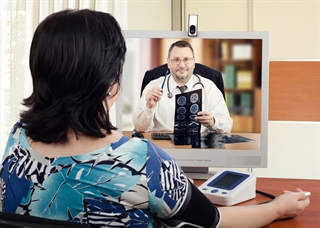Telemedicine in Your Movement Disorders Practice
This is a living page and will continue to be updated as more information from our members around the globe is gathered.
A Step-by-Step Guide
April 2020
Due to the COVID-19 pandemic, implementation of telemedicine for the delivery of urgent and ongoing health care has increased rapidly. The MDS Telemedicine Study Group has updated this guide to reflect recent changes related to the COVID-19 pandemic, which has led to generally relaxed legal and reimbursement restrictions. However, specific institutional, local, and national regulatory changes are beyond the scope of this guide and must be referenced when utilizing telemedicine in your practice.
Many patients with Parkinson’s disease and other movement disorders, particularly those who are homebound or live in rural areas, are likely to benefit from expanded access to subspecialty care via telemedicine in the short term, but likely also in the long term, due to changes (including improved public awareness and technological, regulatory advancements) prompted by the current crisis.
The umbrella term telemedicine encompasses a broad range of health care tools, including video-conferencing, smartphone health care applications, body-worn sensors or smart homes equipped with sensors. Here, we focus in particular on video conferencing between patients and providers. Telemedicine can be used by neurologists or a wide range of other health care providers for routine follow-up visits, new subspecialty consultations, urgent visits, psychotherapy, genetic counseling, social services, rehabilitation, and education. The merits and benefits of telemedicine are supported by a small but growing body of evidence. Telemedicine software options continue to grow in number and complexity, and laws and regulations surrounding telemedicine practice and reimbursement are frequently changing. This site aims to provide a practical guide for providers who are seeking to establish a telemedicine program, specifically one in which patients are seen via synchronous (i.e., real time) video visits.
When setting up your telemedicine clinic, keep in mind that patient acceptance or level of comfort with telemedicine visits may vary widely across cultures. Consider cultura l preferences when offering video visits to your patients.
l preferences when offering video visits to your patients.
Whenever possible, use a platform that is designed to protect/encrypt personal health information (PHI), including the patient’s face, whenever possible. In extreme settings, software not designed to protect PHI, such as Skype and FaceTime (add any others), may be authorized for use, with the patient’s full understanding and consent regarding limited protections. It is also important the patient and physician be able to easily identify each other over video.
The physician should always identify themselves at the initiation of the visit and be able to provide identification and credentials if requested. Likewise, the role of the physician should be clearly established, in terms of providing a second opinion or on the other hand, being responsible of patient´s care. Additionally, the identity of the patient should be confirmed by using a two-factor identifier such as name and date of birth prior to commencing the evaluation.
Remote visits vary in various aspects, including the complexity of the patient’s medical problems. This affects the potential value, scope, role, and limitations of a telemedicine visit. For example, in the case of a complex and rare undiagnosed new patient evaluation the medical value of a telemedicine visit may be limited compared to a select problem-oriented follow-up visit. It is critical that patients are fully informed about such potential limitations.
In some locations, you may be required to ask for the patient’s consent to a telemedical evaluation prior to initiating the history and exam. It is essential that the teleneurologist only evaluate those components of the exam that can adequately be evaluated via telemedicine.
When postulating about findings, note the limitations of the exam (such as with ophthalmologic, vestibular, strength, and sensory testing) and clarify the need for an in-person evaluation when necessary. Once the exam is complete, there should be a clear manner in which to communicate instructions to the patient and other medical personnel. If the visit is a consultation, it is important to clearly delineate the responsibilities of the teleneurologist and those of the requesting provider to avoid any gaps in care.
https://www.wma.net/policies-post/wma-statement-on-the-ethics-of-telemedicine/






